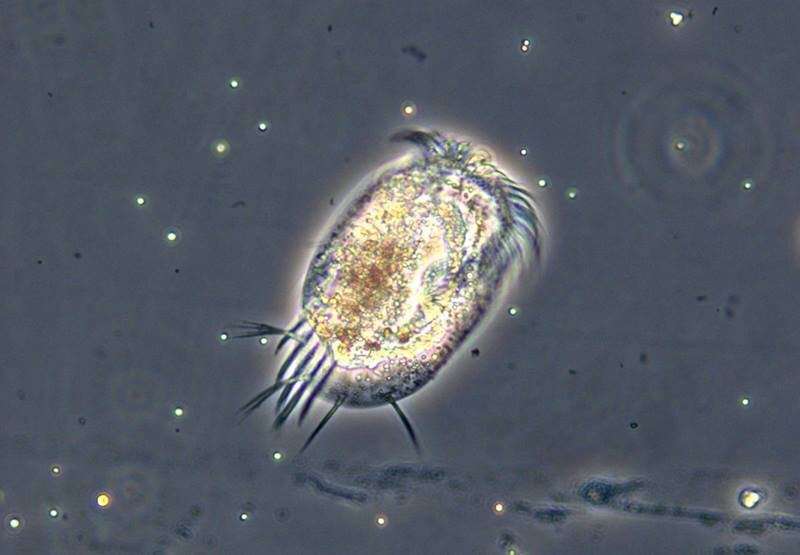This article has been reviewed according to Science X's editorial process and policies. Editors have highlighted the following attributes while ensuring the content's credibility:
fact-checked
peer-reviewed publication
trusted source
proofread
Predicting changes in microbial food webs

Increasing either temperature or nutrients can hurt ecosystems by destabilizing food webs, which are all of the interconnected food chains that make communities behave the way they do. When temperature and nutrients increase together, however, ecosystems sometimes behave in unexpected ways.
In a study published in Proceedings of the Royal Society B: Biological Sciences, scientists studied a laboratory microbial food web that consisted of bacterial prey and protist predators. They found that changes in temperature and nutrients affect how microbial species' abundances and average body sizes relate to each other. This work provides a new way of understanding changes in microbial communities in the face of rapid global warming and nutrient pollution.
Understanding how global change might impact the structure and dynamics of microbial communities is important for developing predictive ecosystem models. Although increasing temperature or nutrients can destabilize food webs, simultaneous increases can produce outcomes that are qualitatively different from their additive negative effects, a phenomenon that is poorly understood.
In this study, researchers from Duke University manipulated temperature and nutrient levels in synthetic microbial food webs composed of bacteria, bacterivorous protists, and omnivorous top predators. Tracking population densities and body sizes over time allowed the scientists to quantify trophic interactions and feedbacks between species' body sizes and population dynamics.
Experiments indicated that temperature and nutrients significantly but differentially affected species' population dynamics across all trophic levels, while their interactive effects were stronger in higher trophic levels. The strongest interactions between body size and population dynamics, as well as interactions among species, were observed at lower nutrient levels and higher temperatures.
The study shows how the stability of microbial food webs might change when multiple environmental stressors change in unison. This provides a new framework for understanding how ecosystems respond to the effects of human activity. Specifically, understanding how such responses might play out across different levels in an ecosystem will lead to better predictions of microbial community responses to climate change. This in turn will help scientists better predict how entire ecosystems will respond to a changing climate.
The results suggests that rapid changes in body size mediate temperature responses at the population and community levels, potentially strengthening species interactions under environmental change. The study provides insights into microbial food web responses to warming and eutrophication, clarifying how environmental stressors might impact the complex dynamics of natural food webs in a changing world.
More information: Ze-Yi Han et al, Temperature and nutrients drive eco-phenotypic dynamics in a microbial food web, Proceedings of the Royal Society B: Biological Sciences (2023). DOI: 10.1098/rspb.2022.2263
Journal information: Proceedings of the Royal Society B
Provided by US Department of Energy


















